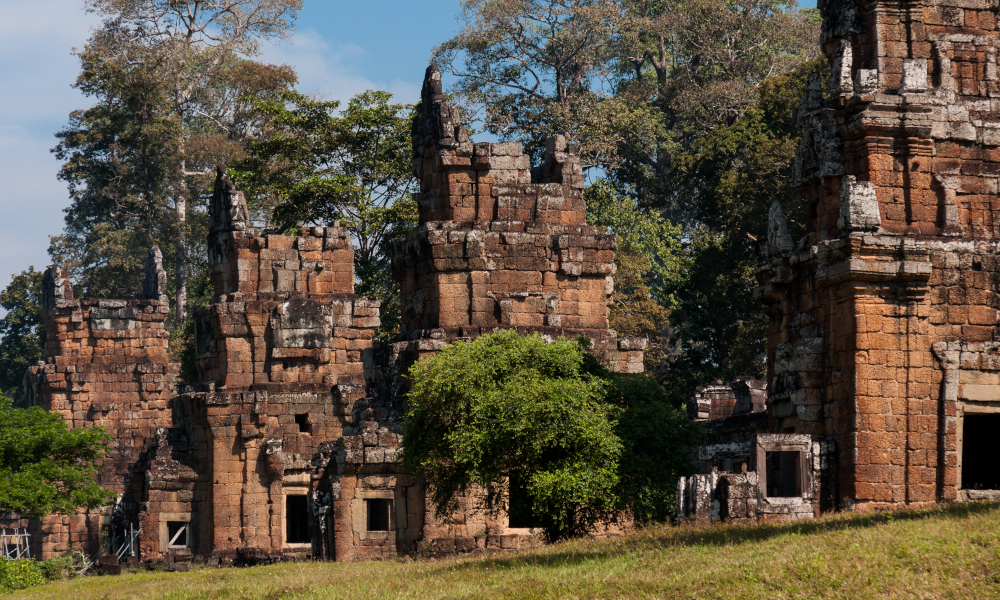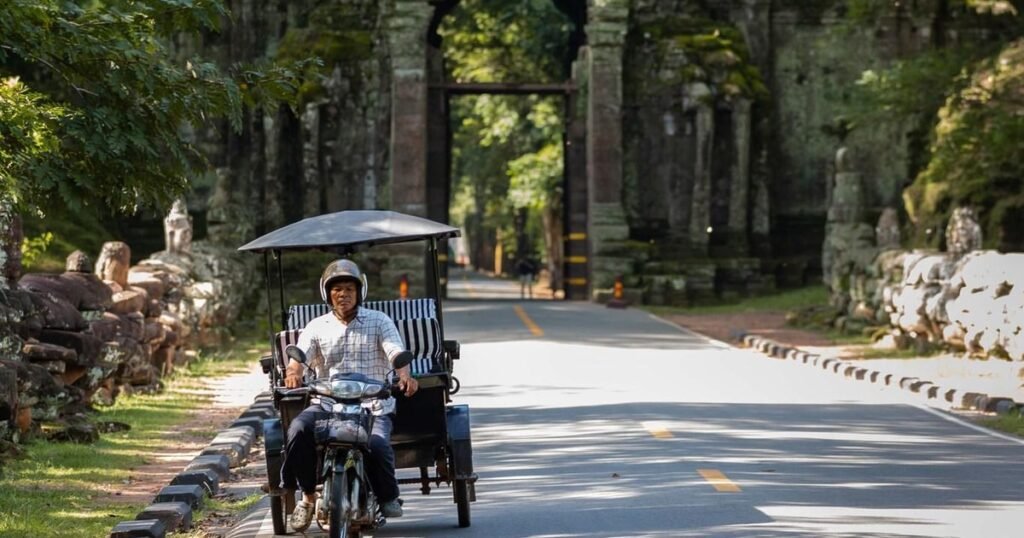Prasat Suor Prat

Twelve nearly identical towers constructed from laterite and sandstone are situated opposite and parallel to the Terrace of the Elephants. The artistic and architectural characteristics of these towers are somewhat distinctive, making them difficult to classify or date accurately. While construction may have commenced during the reign of Jayavarman VII, the towers do not exhibit the typical features associated with the Bayon style.
Table of Contents
ToggleThere is speculation that these structures could be post-Bayon or potentially date back to as early as the 11th century. The original purpose of the towers remains a topic of discussion; however, in the 13th-century work “Customs of Cambodia,” the Chinese envoy to Angkor, Zhou Daguan, provides a romantic yet questionable account of their use. He claimed that the towers served as venues for resolving legal disputes and criminal matters.
According to his account, the disputing parties were confined within the towers for several days, and the individual who emerged in poor health was deemed the loser, judged guilty by divine intervention. The towers are best photographed in the late afternoon.
Experience a private Tuktuk tour of Angkor Wat and its neighboring temples. Discover the grandeur of Angkor Thom, Ta Keo, Banteay Kdei, and additional locations...
Layout and Design
The twelve towers are aligned along a north-south axis. Each tower features a square base and comprises two upper levels. Terraces have been constructed to the west of each tower, providing a view of the palace grounds. This arrangement suggests that these “guest houses” were intended for visitors to observe royal parades and celebrations.
Each temple is adorned with windows on the north, east, and south facades, showcasing intricate carvings of nagas and lions in the sandstone.
Currently, the road leading to the Victory Gate on the eastern side of Angkor Thom separates the temples.
History of Prasat Suor Prat
The precise purpose of the Twelve Towers remains a topic of debate among historians. The exact date of their construction is also somewhat ambiguous, with estimates suggesting they were erected during the late 12th or early 13th century under the reign of King Jayavarman VII. However, some scholars propose that King Indravarman II may have been responsible for their construction.
The name “Towers of the Tight-Rope Dancers” implies that these structures served as platforms for tightrope performances, entertaining the king and his guests who would observe from adjacent terraces.
Typically, temples are oriented towards the east or west; however, these towers are arranged symmetrically in a north-south direction, indicating that they were likely not intended for worship.
Zhou Daguan, a Chinese diplomat who visited the region in the late 13th century, suggested that the towers might have been used for resolving legal disputes. According to his account, if a conflict could not be settled, the disputing parties would be confined within one of the towers. After four days, the individuals would be released, with the guilty party likely suffering from illness while the innocent would remain in good health.
Another hypothesis posits that the towers functioned as reception halls for guests, providing an excellent vantage point to observe parades, games, and festivals taking place on the terraces.
In terms of modern history, the twelve towers were rediscovered in the 19th century by French explorers, believed to have been abandoned around the 16th century, similar to many other temples in the area. Reconstruction efforts commenced in 2001 due to concerns over the structural integrity of several towers, culminating in completion in 2005, facilitated by the Japanese government and the local Apsara authority.
Should Visit or Not
This location is among the most frequented sections of Angkor Park and serves as a favored destination for picnicking. Visitors can discover a pleasant area beneath one of the adjacent trees to enjoy a meal. Additionally, one can take a moment to unwind while observing the terraces and envisioning the views that would have greeted the esteemed guests of the past.
Location & How to Get There
Prasat Suor Prat is situated in Angkor Thom, positioned in front of the two notable terraces: the Terrace of the Leper King and the Terrace of the Elephants. This group of towers is approximately 500 meters from the Bayon temple, and nearly all visitors to the park will encounter them at some point during their exploration.
To reach this location, proceed north from the Bayon temple towards the Royal Enclosure within Angkor Thom, where the towers will be visible on your right. Given their proximity to one of the most frequented sites in Angkor Park, a variety of transportation options are readily available. You will observe large buses, cars, tuk-tuks, and bicycles navigating this bustling area.

